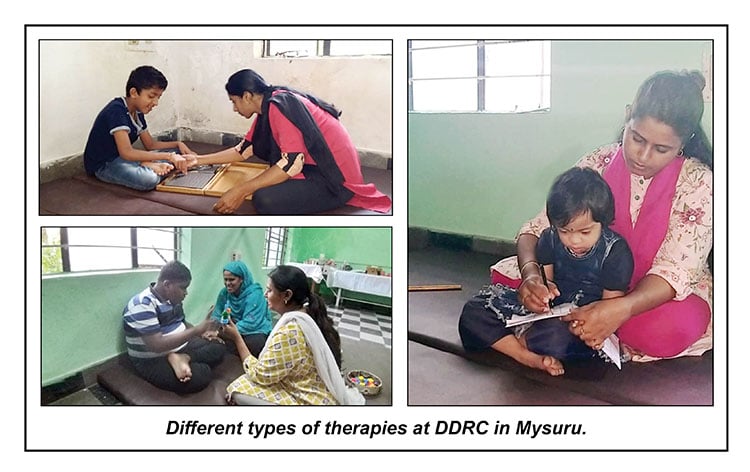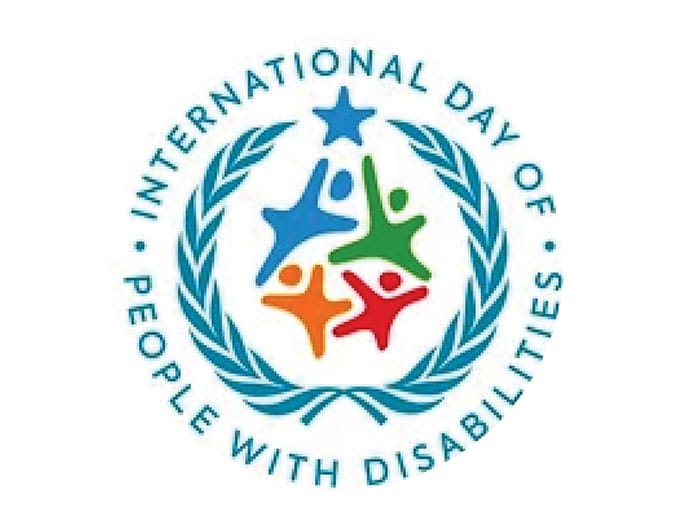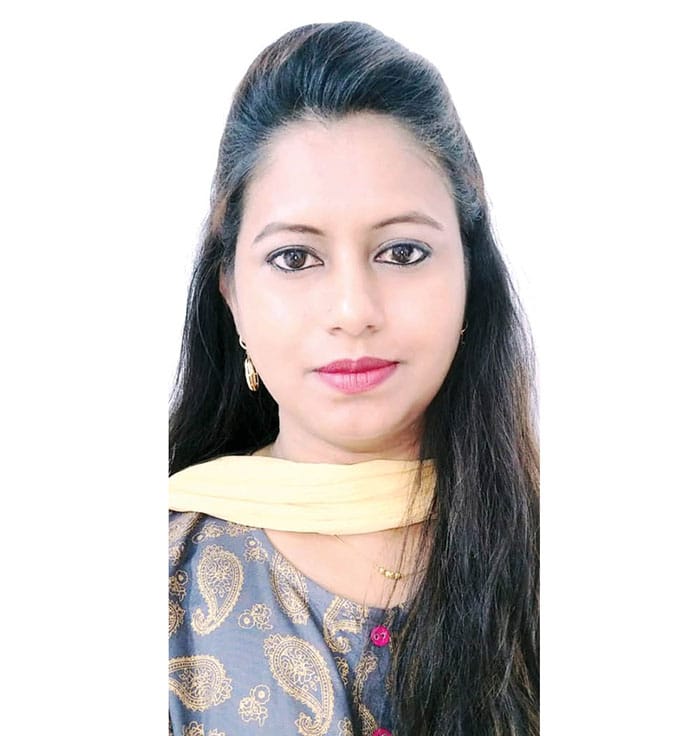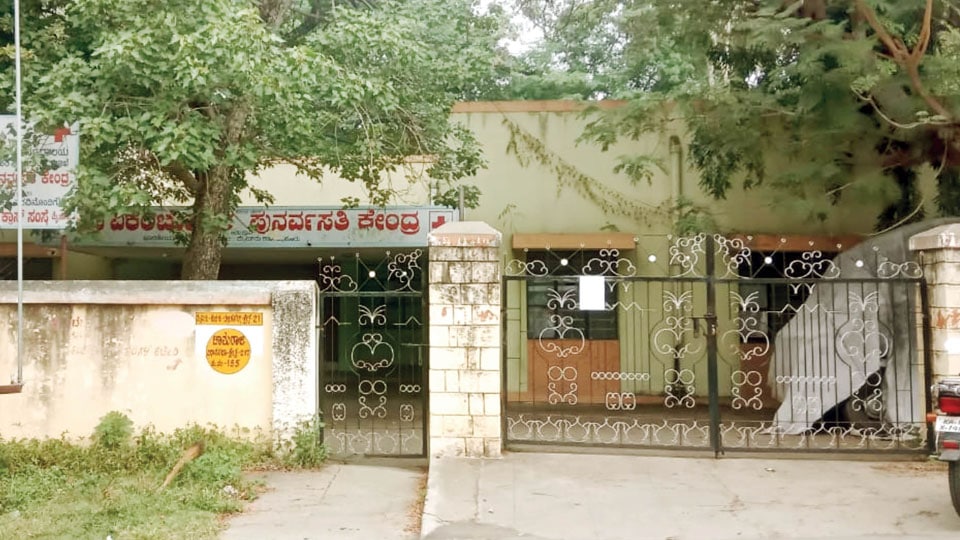International Day of Persons with Disabilities
Mysuru District Disability Rehabilitation Centre has 13,131 registered members; 11,395 follow-up cases
By Irfana Husen
Since 1992, the International Day of Persons with Disabilities (IDPD) has been annually observed on 3rd December around the world. The theme for this 2019 IDPD is ‘Promoting the participation of persons with disabilities and their leadership: Taking action on the 2030 Development Agenda.’ The theme focuses on the empowerment of persons with disabilities for inclusive, equitable and sustainable development as envisaged in the 2030 Agenda for Sustainable Development, which pledges to ‘Leave no one behind’ and recognises disability as a cross-cutting issue, to be considered in the implementation of its 17 Sustainable Development Goals. It was originally called “International Day of Disabled Persons” until 2007 and each year the Day focuses on a different issue.
“Rehabilitation is a strategy for enhancing the quality of life of disabled people by improving service delivery with more equitable opportunities and by promoting and protecting their human rights,” says Irfana Husen, Audiologist and Speech Therapist at DDRC in Tilaknagar, Mysuru. She can be reached on Mob: 97394-61439.
The District Disability Rehabilitation Centre (ddrc) started as an outreach activity under the Ministry of Women and Child Development and the Department for the Empowerment of Differently-Abled and Senior Citizens for providing comprehensive rehabilitation services to persons with disability at the grassroots level.
As per the country’s latest statistics, an estimated 2.1 percent of Indian population have a disability, a humbling figure of once 26 million people. A person can face disability intellectually and physically at any point in their life from medical complication to life-altering events.
Around 74 percent people come under rural area and only 5 percent gets rehabilitation services while 95 percent go without any facilities due to lack of awareness among the rural populace. To overcome these drawbacks, Ddrc was established in Mysuru in 2011 under the aegis of the Department for the Empowerment of Differently-Abled and Senior Citizens, the Department of Women and Child Development and Indian Red Cross Society.
The Government of India has brought out an Act for the disabled to make sure they also form an important part of nation-building. The Persons with Disabilities (Equal Opportunities, Protection of Rights and Full Participation) Act, 1995 came into force on Feb. 7, 1996 — a significant step which ensures equal participation for people with disabilities.
The Act provides for both preventive and promotional aspects of rehabilitation like education, employment, vocational training, reservation, research, manpower development and creation of barrier-free environment among others.

Type of disabilities increased from 7 to 21
The Rights of Persons with Disabilities Bill – 2016 replaces the existing PWD Act 1995 in which type of disabilities have been increased from the existing 7 to 21 disabilities: 1. Blindness, 2. Low vision, 3. Leprosy-cured persons, 4. Hearing impairment (deaf and hard of hearing), 5. Locomotor disabilities, 6. Dwarfism, 7. Intellectual disability, 8. Mental illness, 9. Autism spectrum disability, 10. Cerebral palsy, 11. Muscular dystrophy, 12. Chronic neurological condition, 13. Specific learning disability, 14. Multiple sclerosis, 15. Speech and language disability, 16. Thalassemia, 17. Haemophilia, 18. Sickle cell disease, 19. Multiple disabilities including deaf, blind, 20. Acid attack victim, 21. Parkinson’s disease.

Objectives of DDRC
- Survey and identification of persons with disabilities through camp approach, facilitation of disability certificate, bus pass and other concession along with issue of Unique Disability Identity (udid) card.
- Early intervention and facilitating insurance schemes.
- Assessment of need for assistive devices, provision / fitment of assisting adip/alimco camps for distribution of aids and assistive devices in the district.
- Therapeutic services like physiotherapy, occupational therapy, speech therapy, auditory training, counselling etc.
- Referral and arrangement of surgical correction through Government and Charitable Institutes.
- Arrangement of loans for self-employment through banks and other financial institutions.
- Counselling for persons with disabilities, their parents and family members.
- Orientation to teachers, community and families.
- Training to persons with disabilities for early motivation and early stimulation for education, vocational training and employment.
- Identifying suitable vocations for persons with disabilities, keeping in view local resources; designing and providing vocational training so as to make them economically independent.
- Provide referral services for existing educational training, vocational institutions and to act as outreach centre for the services provided by the institutes.
- Counselling on Gram Panchayat, Taluk Panchayat, Zilla Panchayat and other Departments that reserves 5% grants to the empowerment of persons with disabilities.

13,131 persons registered, 2,450 camps held
Speaking to Star of Mysore, Irfana Husen, Audiologist and Speech Therapist at DDRC, said that the Centre has a total of 13,131 persons with disabilities as registered members. It has conducted around 2,450 camps (Awareness, Assessment and Distribution Programmes) in rural and urban areas of Mysuru and undertaken 2,521 counselling sessions regarding educational facilities and services available for special kids. Vocational training was imparted to 474 identified beneficiaries and counselling on self-employment for 1,517 beneficiaries.
A total of 11,395 follow-up cases for physiotherapy, speech therapy, auditory training and counselling have been going on at DDRC.
Aids and appliances available at DDRC
Cerebral Palsy (CP) chair, wheel chair, auxiliary crutches, elbow crutches, splints, gaiters, walking stick, standing frame, rollator, white cane, callipers, tricycle, behind the ear hearing aids, pocket hearing aids, MR kits, motorised vehicles, artificial hand, artificial leg, spinal braces, walker, surgical shoe, air bed, water bed, Braille aids and knee caps are the aids and appliances available at DDRC to be distributed to the identified beneficiaries.








Recent Comments